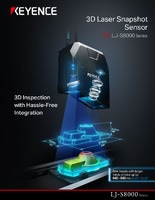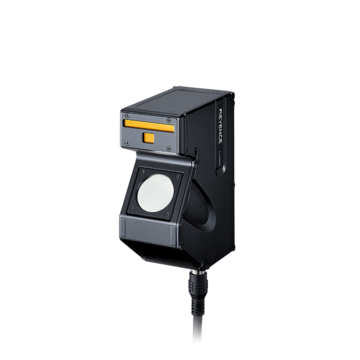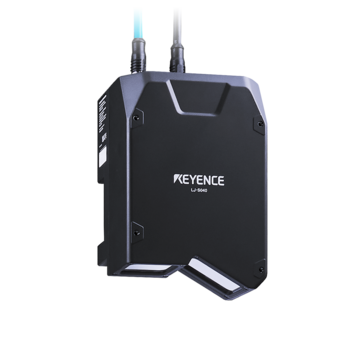Measurement Sensors
Dimension Measurement
Displacement Measurement
Missing Item Inspection Sensors
Fast production lines need reliable systems to confirm that cartons, pallets and crates contain the right number of items. They must also ensure that primary packaging (like a bottle or jar) is correctly filled to meet consumer satisfaction and regulatory requirements.
KEYENCE provides a wide variety of measurement sensors for 1D, 2D, and 3D inspection and measurement efforts. Many of these sensors are perfect for highly accurate missing item inspections.
Get detailed information on our products by downloading our catalog.
View Catalog![Automated Measurement and Inspection Examples [Food and Containers]](/img/asset/AS_138240_L.jpg)

What is Missing Item Inspection?
During final assembly, crates, cartons, and other types of secondary packaging materials are inspected to ensure that they are completely or correctly filled. If the number or quantity of product is wrong, then missing item inspection sensors will alert the inspection point or software. Depending on the inspection system, the bad parts could then be separated for additional inspection or processing.
Key Features of Missing Item Inspection Sensors
Missing item inspection sensors must meet certain requirements to successfully identify missing bottles, bottle caps, and other secondary packaging items.
High Accuracy
A missing item sensor should not be limited to simply inspecting large objects. In many use cases, small objects must be found in large image areas. Therefore, an inspection solution must provide precise detection capabilities even in complex packaging scenarios.
Non-Contact Measurement
Inspection must occur without physical contact with the packaging material or with the content within. This is to prevent contamination, physical damage, or packaging process disruption.
High-Speed Measurement
Production lines typically move at high speeds. A food product inspection system must be able to inspect a lot of items in a short time. In some industries, this could mean 1,000 packages per minute or more. Consistency in the delivery of speedy inspection performance in a demanding production environment is another feature an inspection sensor system must have.
Advanced Algorithms
Advanced sensor and algorithm systems help analyze packaging content and accurately detect missing items while minimizing false negatives and false positives. Some systems are designed to check for completeness by inspecting the presence of bottle caps. This lets the system not only check for completeness but also if a cap is properly attached to a bottle. This type of design requires advanced sensor algorithms.
We’re here to provide you with more details.
Reach out today!

Benefits of Using Missing Item Inspection Solutions
Inspection and measurement sensors for the food and beverage industry provide numerous benefits to manufacturing and production lines—key among them are revenue and customer satisfaction. Retailers and consumers who do not receive the right quantity of products may simply opt for returns and demand refunds.
Costly chargebacks can hurt a company’s bottom line and may also damage its brand reputation. Using a missing item inspection sensor system lets companies ensure accuracy in fill levels and completeness of packaged product quantities.
Automated inspection systems greatly reduce the limitations of manual inspection. Machine sensor measurement and inspection solutions provide far fewer errors than humans. They can also inspect items at high speeds, making them perfect for high-volume production and manufacturing lines.
Why Choose Our Sensors for Missing Item Inspection?
KEYENCE has been providing measurement sensors in the food and beverage industry for years, whether it’s for fill-level checks or package completeness for various production companies.
For inspection applications where 3D inspection and measurement are needed, KEYENCE also has a line of products that cater to such needs. Ready to discover our sensors that are just perfect for your missing item inspection needs? Contact KEYENCE today!
Contact us to learn more about how our advanced technology can help take your business to the next level.
Contact Us
Related Products
Applications
Dimension Measurement
- Thickness and Width Measurement
- Step Height Measurement
- Inner and Outer Diameter Measurement
- Measuring Angles
- Meandering/Edge Measurement
Displacement Measurement
- Positioning and Stroke Length Measurement
- Vibration and Runout Measurement
- Deflection Measurement
- Measuring Eccentricity




